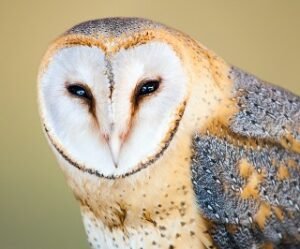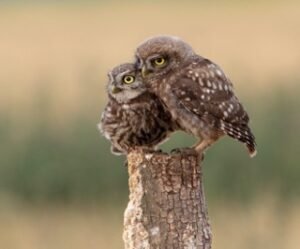
Owl Skeleton
The skeleton of an owl is typical to that of birds in general. Lightweight and durable, it may be used for both walking and flight. It is estimated that the skeleton accounts for 7-9 percent of the total body weight of owls.
A large number of the bones in birds that would normally be separated in mammals are fused together, allowing them to sustain their weight on the ground with greater strength. Furthermore, some of the bigger bones are hollow, having bony interior bracing to support their weight.
Additionally, this aids with weight loss. A number of owl species have clearly asymmetrical skulls, which is an adaptation for directional hearing in order to avoid predators.
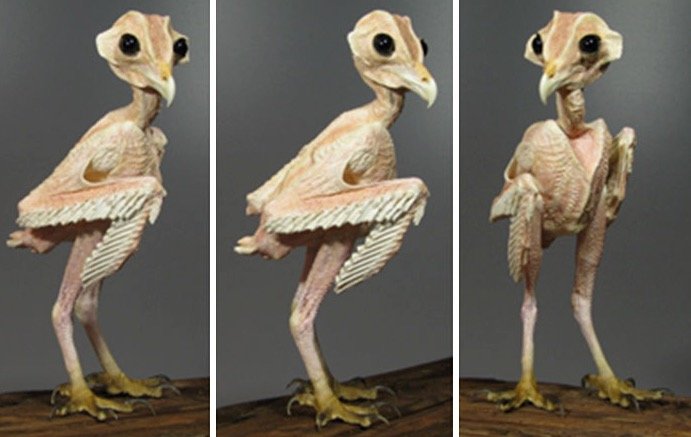
How Owls Turn Their Heads 270 Degree?
If an owl is facing forward, it has the ability to tilt its head up to 270 degrees to the left or right. According to popular belief, an owl’s head can be completely turned around from a forward looking position. In order to accomplish this, a number of changes are required:
1. Owls have 14 vertebrae in their neck, which is twice the number of vertebrae in humans.
2. The owl has a single occipital articulation with the cervical vertebrae, and this is the unique one on the planet. (On top of the backbone, there is only one bone that can be found.) Two types of articulations are present in human anatomy. This permits the owl to pivot on the spinal column in the same way that your body may pivot on one leg. In addition, the arrangement of their muscular structure permits them to move in this manner.
3. Owls have a unique network of jugular veins with related bypass connecting blood vessels to guarantee that blood supply (and return) are not obstructed while the neck is twisted.
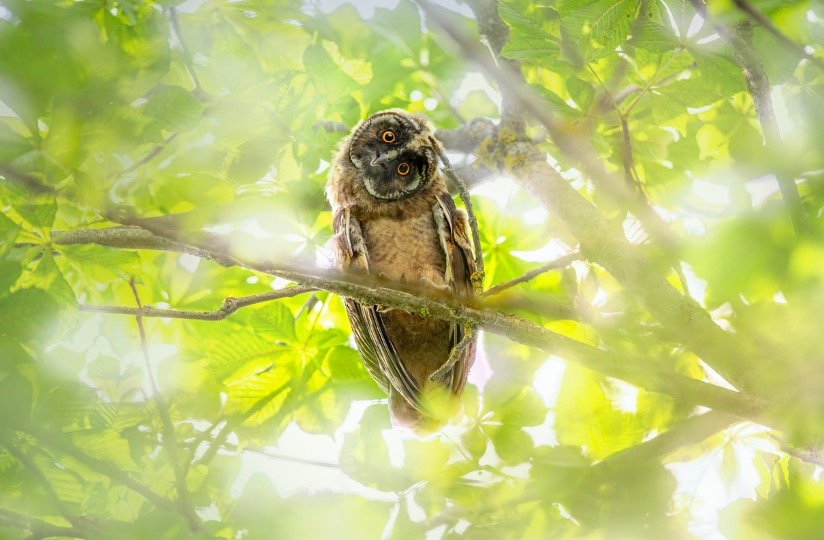
Other Bones In Owls Skeleton
Flight muscles are supported by the huge flat breastbone (sternum), which is a large flat breastbone with a lot of bone. It also has the additional benefit of protecting the heart, lungs, and other vital organs.
The Carina, or Sternum Keel, of owls belonging to the Tytonidae family is broad at the base and narrows as it approaches the belly. The lower edge of the sternum has just two small notches on either side, and the bottom edge of the sternum has no notches.

The carina of the Strigidae is small at its top section and gradually broader towards the belly, while the lower edge of the sternum bears two deep notches on either side, which are visible on the sternum’s lower surface.
With their long wing bones and large surface area, owls have comparatively low wing loading compared to other birds of prey. Easy takeoffs and effortless flight are enabled by this, even while the owl is transporting live prey.
To aid in the efficient killing and transport of prey, the tarso-metatarsi (owl foot bones) are comparatively short and robust.
Barred Owl Skull
Known as the barred owl because of its barred and spotty cinnamon brown, tan, and white plumage, the barred owl is an average-sized owl with a yellow beak, unusually large brown eyes for its size, and a rounded head lacking any ear tufts.
In the northern United States, into Canada, and east of the Rockies, the barred owl can be found, and it is the polar opposite of the western United States’ spotted owl. As the only owl in the eastern United States with brown eyes, it is also the most common owl in the deep forests.
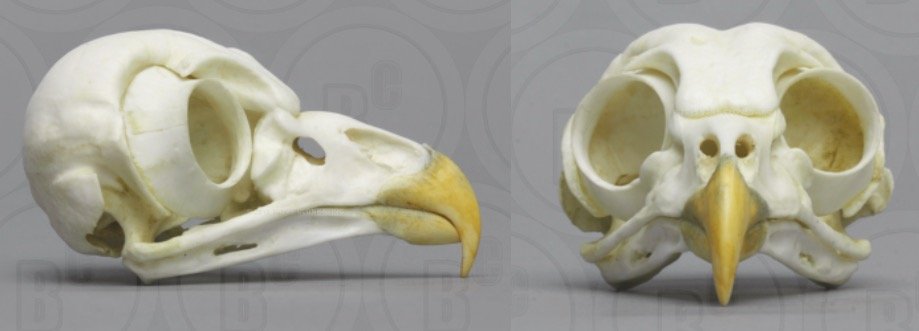
Among all of the North American owls, it produces the most diverse range of tones and vocalizations. The right ear of barred owls is located higher on the skull than the left ear of the species. Sound waves will reach one ear before the other, and this variation in positioning allows the owl to discern the direction of the sound source.
In this way, even when hunting in thick snow, the owl has a better chance of pinpointing its prey with pinpoint accuracy.’ Barred owls feed on tiny to medium-sized food, primarily mice, although they also prey on opossums, foxes, small owls, squirrels, weasels, small birds, frogs, snakes, and lizards, among other animals.
Great Horned Owl Set
Great horned owls are the largest of the ‘eared’ owls found in North America, and they can be found in a wide range of environments. These nocturnal raptors rely mostly on rodents, but they are also skilled hunters and will readily attack and consume other owls and birds of prey, as well as domestic cats and small dogs. As far as we know, they are the only critters that prey on skunks frequently. Parliament is the term used to describe a group of owls.
The Skull Of A Great Horned Owl
It is possible to see the great horned owl in all three of America’s continents – North, Central and South America. Heaviest of all the owls, it grows to around 2 feet in length and has tufts above its ears that give it the appearance of horns, hence earning it the moniker “horned.” One of its most distinguishing characteristics is its ability to rotate its head a full 180 degrees.
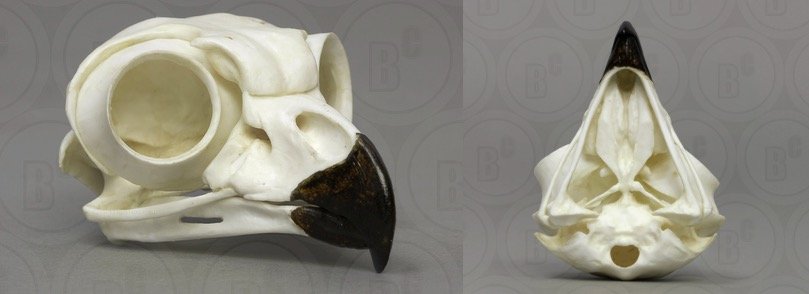
Gratitude and thanks to the Vertebrate Zoology section of the Santa Barbara Museum of Natural History for allowing us to utilize this beautiful specimen from their vast collection. Some of the proceeds from the sales will go toward furthering their research studies. Skull made up of one piece (jaw glued to cranium).
Great Horned Owl Talon
With our great horned owl skull, BC-072, this talon is the perfect complement. It is possible to see the great horned owl in all three of America’s continents – North, Central and South America. When fully grown, it measures approximately 2 feet in length.
It has tufts above its ears that seem similar to horns, giving it the appearance of a horned creature (hence the name). One of its most distinctive characteristics is its ability to turn its head completely around.

Thanks to the Vertebrate Zoology section of the Santa Barbara Museum of Natural History for lending us this beautiful specimen from their enormous collection, which we respectfully acknowledge and thank them for. Some of the proceeds from the sales will go toward furthering their studies.
Barn Owl Set
In addition to having excellent night vision and an exceptionally acute sense of hearing, the barn owl is found all over the world (on all continents except Antarctica). In appearance, the barn owl has a white heart-shaped face and a spherical head.
Do Owls Have Long Legs? Why Are They So Long?
It does not have any tufts on its ears. A delicate saw-toothed edge is present on the primary flying feathers of the owl, which allows for silent flight. There are no differences in size between male and female of this species.
Skull Of The Short-eared Owl
Unlike other owls, the short-eared owl has a rusty underpart that is white (in the case of a male) or rusty (in the case of a female), and its upperparts are mottled brown and white with brown streaks. There are black circles around the eyes, which are yellow, and a round face on it.
It can be found in wide-open marshes, grasslands, prairies, and agricultural areas over most of North America and Eurasia. It is a medium-sized owl (13-17 inches in length). It preys on small mammals by flying close to the ground in the afternoon, at dusk or dawn, and seizing them with its talons.

Given that it constructs its nest on the ground, it may become prey for larger creatures such as coyotes and dogs, as well as foxes. It normally lays 4 to 9 eggs, which are incubated for one month in the egg shell.
The newly hatched young leave the hazardous nest in a short period of time and become independent within a month. Skull made up of one piece (jaw glued to cranium).



